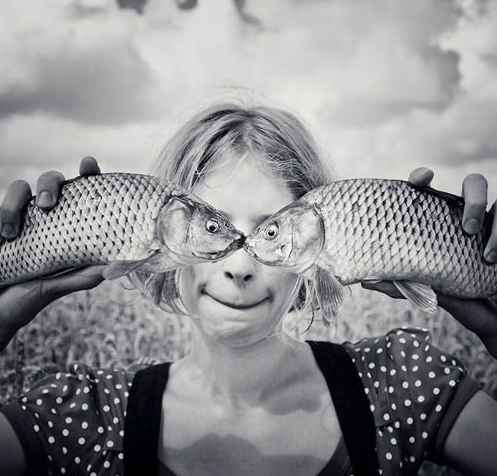This is a quick post, just to alert you to a resource for buying fish because I think many of us feel in the dark as to which are best to buy and why.
The Australian Marine Conservation Society (AMCS) have developed the first online sustainability guide for seafood consumers in Australia. It was developed in response to growing public concern about overfishing and its impact on our oceans and their wildlife, and is designed to help you make informed seafood choices and play a part in swelling the tide for sustainable seafood in Australia.
The guide lists fish according to ‘better’ option, ‘think twice’, or ‘no’- which basically means don’t eat it if you have a conscience.
According to the sustainability guide, some of the well-known ‘better’ options include
- sardines,
- whiting, calamari,
- oysters
- and mahi mahi.
We should be saying “no” to:
- tuna,
- salmon,
- gemfish
- and farmed barramundi
Some of the ‘think twice’ fish include prawns(farmed in Australia), dory, and wild barramundi. See the guide for a full list and explanation of all fish, and if you’re interested, I’ve posted before on which tinned tuna to buy.
Here’s some bullet-pointed things to share at the pub tonight:
- One research team assessing the relative sustainability of the top seafood producing nations ranked Australia 31st out of the 53 nations considered. We still have a long way to go.
- When you’re shopping for seafood, ask if the fish is a deep sea, slow-growing or long-lived species. Deep sea species are generally slow-growing and long-lived. This makes them particularly vulnerable to fishing pressure, and they take longer to recover from impacts on their populations. Give these species a break.
- The ‘dolphin friendly’ logos evident on most canned fish, particularly tuna, are not a measure of sustainability. While dolphin friendly seafood is caught in ways that minimise the number of dolphins killed, they may still catch threatened species such as sharks or turtles. The ‘dolphin friendly’ logo also does not give any indication of overfishing. Although some companies try to do the right thing, there is no independent regulation of the use of dolphin friendly labels.
There is a lot of helpful information on the website. You can also buy a guide for $9.95 here. Keep it with you and shop with a clear conscience.
Mark Bittman from the New York Times says he only eats white fillet. He shares some tips on cooking and eating sustainable fish here. I’ve pulled out some top tips for you:
- cook any white fillet the same way you cook any other white fillet: broiled, sautéed, roasted or poached, and teamed with just about any seasoning you can think of, from the obvious, like tomatoes and capers, to the semiexotic, like sugar and fish sauce.
- thicker pieces of fish will cook in 15 minutes or less, thinner pieces in under 10.
- you can tell that any fillet is done when it’s opaque and a thin-bladed knife meets little resistance when you use it to poke the thickest part of the fish.
I know a lot of eco-orientated nutritionists share on this blog…what are your thoughts? Anyone else got fish-buying tips?


